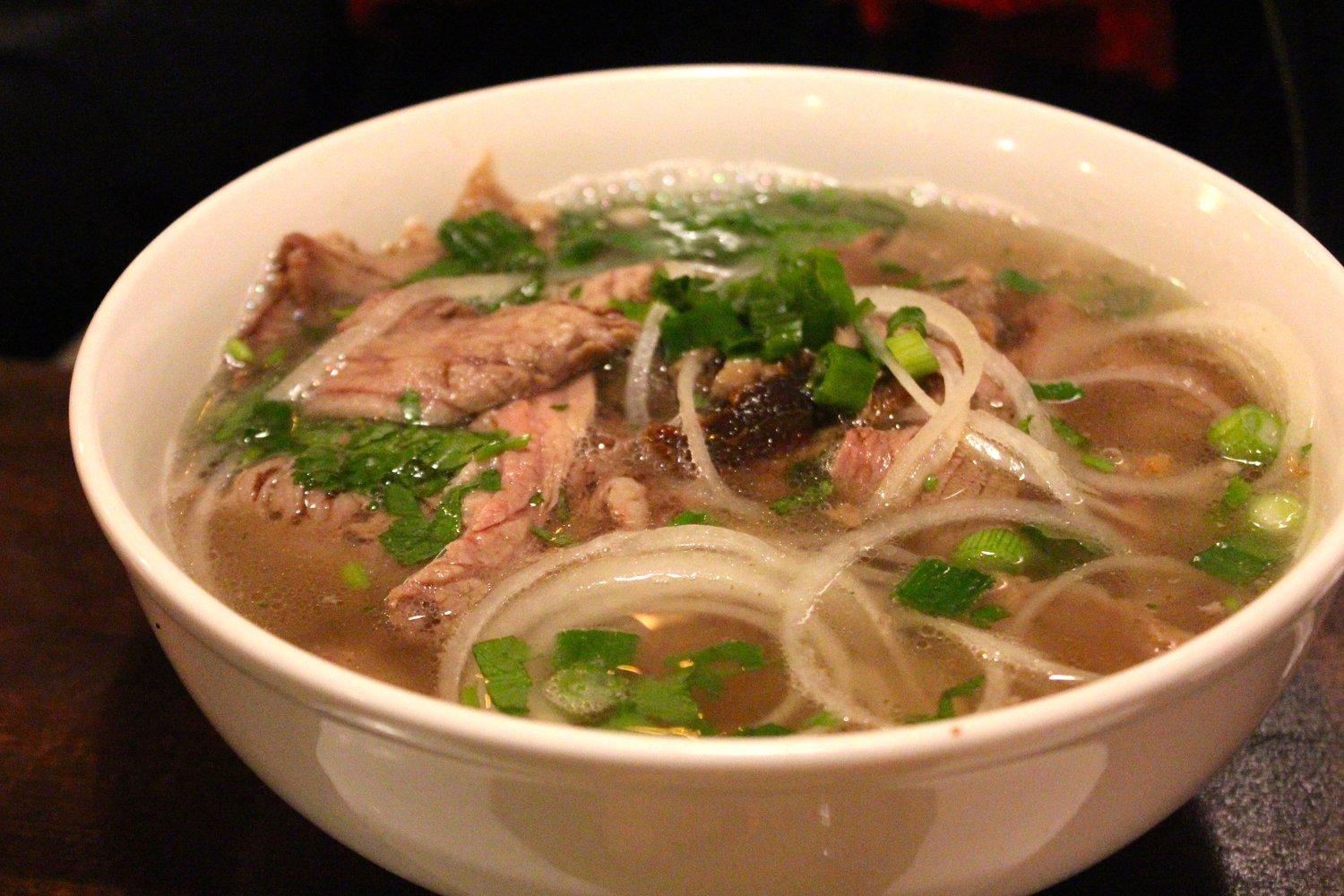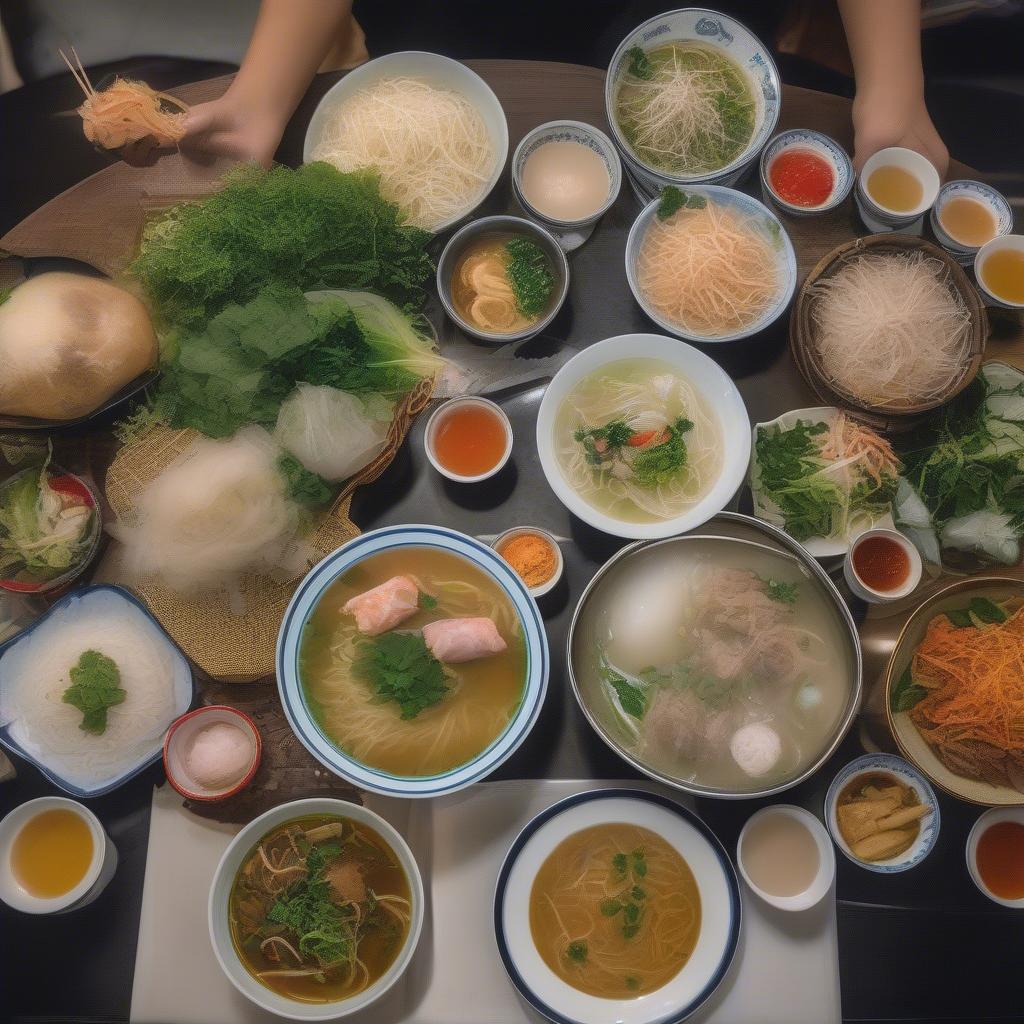
Vietnamese street food is a vibrant and integral part of the country’s culture, offering a delicious and affordable culinary adventure for locals and tourists alike. From bustling city streets to quaint rural villages, the aroma of sizzling meats, fragrant herbs, and flavorful broths fills the air, enticing passersby to indulge in a symphony of tastes. This article delves into the fascinating world of Vietnamese street food, exploring its popular dishes, regional variations, cultural significance, and essential tips for enjoying this unique culinary experience.
Table Content:
A Culinary Tapestry: Popular Vietnamese Street Food Dishes
Vietnamese street food boasts an incredible diversity of dishes, each with its own unique flavor profile and history. Phở, perhaps the most iconic Vietnamese dish, is a savory noodle soup typically made with beef or chicken broth, rice noodles, and various herbs and spices. Bún chả, another popular choice, consists of grilled pork served with vermicelli noodles, fresh herbs, and a dipping sauce. Gỏi cuốn, or fresh spring rolls, are a refreshing option filled with vermicelli noodles, shrimp, pork, vegetables, and herbs, wrapped in translucent rice paper. Bánh mì, a legacy of French colonialism, is a delicious baguette sandwich filled with various ingredients such as pickled carrots, daikon radish, cilantro, and a choice of meat or tofu.
 A steaming bowl of Pho, a popular Vietnamese street food dish
A steaming bowl of Pho, a popular Vietnamese street food dish
Regional Flavors: Exploring Vietnamese Street Food Diversity
Vietnam’s diverse geography and cultural influences have resulted in regional variations in street food offerings. In the north, Hanoi is renowned for its phở and bún chả. Central Vietnam, particularly Hue, offers distinctive dishes like bún bò Huế, a spicy beef noodle soup, and bánh bèo, steamed rice cakes topped with various savory ingredients. Southern Vietnam, with its tropical climate and proximity to the Mekong Delta, features fresh seafood dishes, vibrant salads, and sweet treats like chè, a dessert soup.
 A variety of regional Vietnamese street food dishes, showcasing the country's culinary diversity.
A variety of regional Vietnamese street food dishes, showcasing the country's culinary diversity.
Cultural Significance: Street Food as a Way of Life
Street food is deeply ingrained in Vietnamese culture, representing more than just a quick and affordable meal. It’s a social activity, a way for communities to connect and share a culinary experience. Street food stalls often become gathering places, where friends and families gather to enjoy delicious food and lively conversation. The vibrant atmosphere, the enticing aromas, and the shared experience of eating on the streets contribute to the cultural richness of Vietnam.
 People enjoying Vietnamese street food together, highlighting its social and cultural importance.
People enjoying Vietnamese street food together, highlighting its social and cultural importance.
Tips for Navigating the World of Vietnamese Street Food
For those venturing into the world of Vietnamese street food, a few tips can enhance the experience. Be adventurous and try new dishes. Don’t be afraid to ask locals for recommendations. Observe how locals order and eat their food. Be mindful of food safety and hygiene. Bargain respectfully when purchasing from street vendors. Most importantly, embrace the vibrant atmosphere and enjoy the delicious flavors of Vietnamese street food.
Conclusion
Vietnamese street food is a culinary treasure trove, offering a delicious and affordable way to experience the country’s rich culture and culinary heritage. From the iconic phở to the regional specialties, each dish tells a story of Vietnam’s diverse culinary landscape. By embracing the vibrant atmosphere and exploring the diverse flavors, visitors can immerse themselves in a truly authentic Vietnamese experience.
